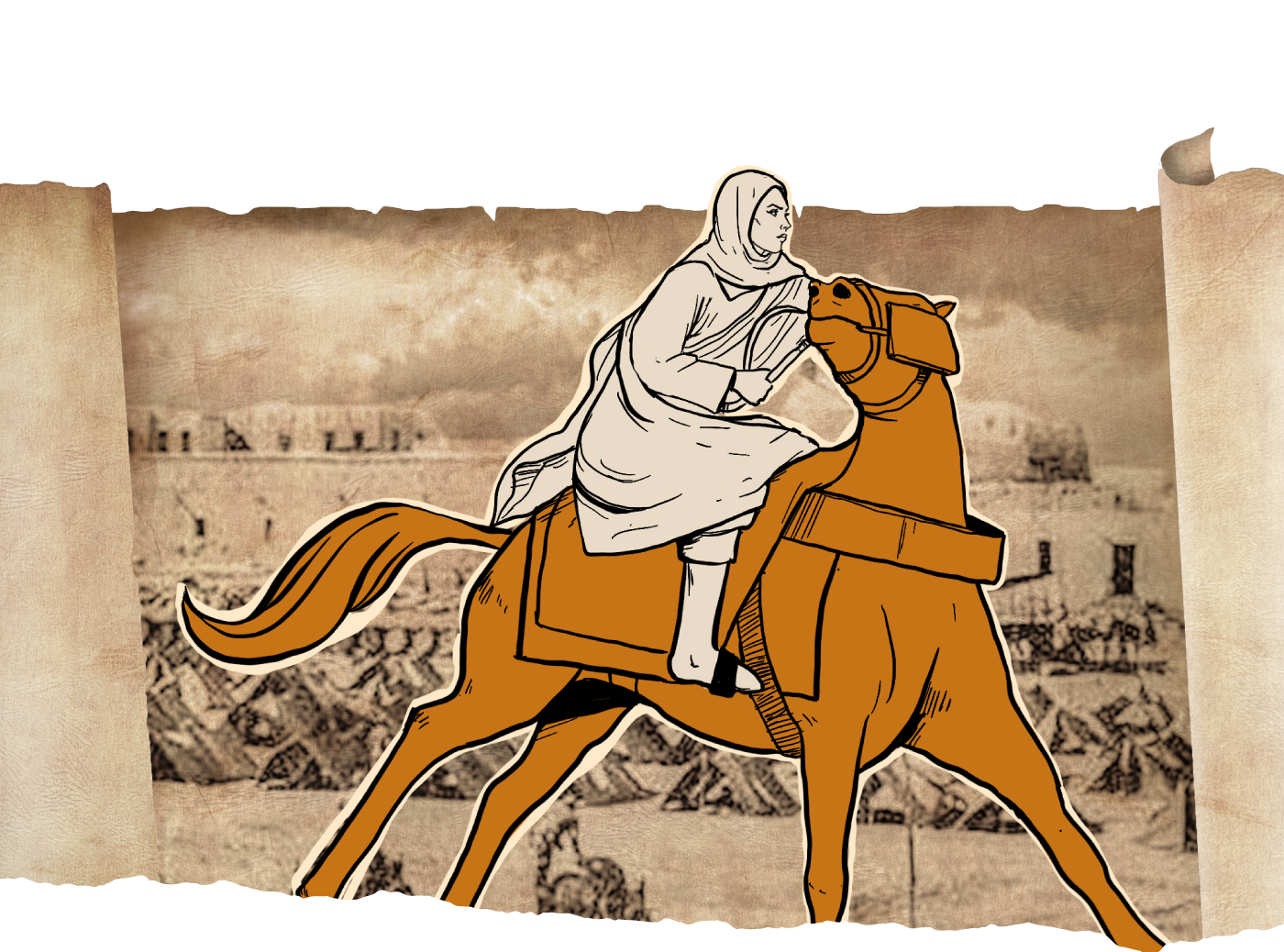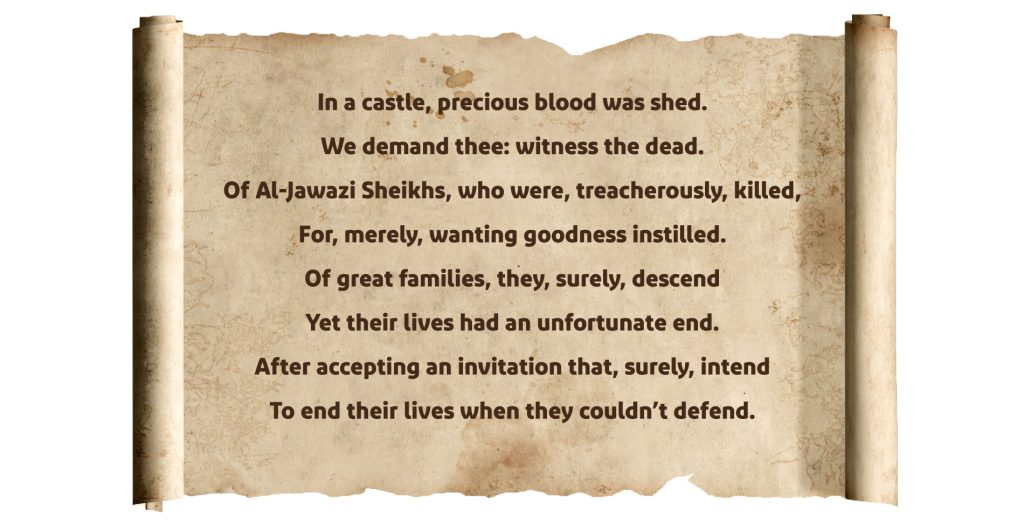
Ethnic elimination of ten thousand innocents
Al-Jawazi massacre The most heinous crime of the Ottomans in Libya
The Ottoman tyranny reached its limit in Libya, injustice intensified, and tyranny reached its climax, but there were those who were able to deter that and defend the truth despite all that. At a time when the Ottomans thought that they controlled the country and people, silenced the tongues with killing and weakened the strong with brutality, they found those who confronted them who were indifferent to the blood that would shed to draw a map of freedom. This is what Al-Jawazi tribe did with the Turks in Libya.
The Libyan researcher, Ramadan Jerboa’, described the Libyan city of Benghazi as “The rebellious Rejectionist”. He explained that this feature adhered to it since the middle of the sixteenth century AD, that is, about a century after its establishment or re-establishment by a group of merchants from Misrata and later Tajoura and Tripoli. They aligned and agreed with the inhabitants of the semi-desert region in which Benghazi is located.
As a result, it flourished with its commercial activity and became an urban center that combines urban and Bedouin culture, which constituted a unique combination. We can call it “Bedouin Urban”. Hence, there was no government or taxes, and the city was not in need of anyone. It was founded by itself and flourished with immigrants coming to it from all parts of Libya without exception.
The Ottomans occupied the city after 130 years of its establishment. They built a palace for the ruler and a military barracks, and they began collecting taxes in favor of the sultans. As a result, rebellion and lack of submission to the occupying authority emerged. This reaction prompted the Ottoman Pasha of Tripoli to subjugate the city with cruelty, as well as disinterest and neglect due to this rebellion, which became mutual between the two parties.
The Ottoman oppression did not scare everyone, and this was proven by the events when Al-Jawazi tribe refused to deal with the Ottoman occupation, but rather refused to pay the tribute and taxes imposed by the Turkish occupiers. As a result, they endured the resistance of the Janissaries with steadfastness and perseverance.
Al-Jawazi tribe inhabited Benghazi and its environs (1000-1942). It is an authentic Arab tribe which lineage goes back to the Arab tribe of Bani Selim, and it was subjected to a massacre during the Libyan Civil War in 1801. The rest of them were expelled to Egypt by Yusuf Pasha Al-Qarmanli. Al-Jawazi did not settle in Egypt for long, as most of them returned to Cyrenaica after many of them were lost.
Al-Jawazi tribe resisted the Ottoman occupier valiantly and refused to pay taxes or submit to the Turks.

The sources indicate that this tribe, proud of its Arabism and strength, was the one who confronted the Ottoman occupier, led the revolution and stopped the crimes of mercenaries against the local population. They also rejected the superiority of the Turkish race over the Arab race, as if they were slaves in forced labor for the benefit of the Ottoman sultans.
Because the criminals did not accept the presence of those who say to them: (No), they used the same method of Muhammad Ali with the Mamluks and plotted a terrible massacre. The matter began when the Turkish military ruler Al-Qarmanli invited the sheikhs of Al-Jawazi to the Turkish castle to negotiate with them. He also deceived them when he fulfilled their requests, so the sheikhs and notables of Al-Jawazi agreed. According to the sources, Al-Qarmanli had arranged the matter, so as soon as they entered the castle, they were surprised by the guards who slaughtered them all.
The historical sources indicate that the Ottoman governor was allowed only one sheikh at the same time to enter. Each time he called one of the sheikhs who did not return again until the call reached Sheikh No. 45 who refused to enter until after he knew the fate of those who entered before him. He was surprised when he knew that the guards of the Ottoman governor killed all the 44 sheikhs and then killed him and slaughtered all their companions in front of the palace.
As soon as they finished killing leaders and notables, the Janissaries and the mercenaries of the Turkish occupier spread in the streets and neighborhoods. They stormed the houses and killed women, children and the elderly until the number of victims reached 10,000.
Al Mezmaah Center for Studies and Research describes the massacres of the Ottoman occupation in Libya, especially what happened against Al-Jawazi tribe in the state of Cyrenaica in eastern Libya, as one of the most heinous massacres in history, in which more than ten thousand members of one tribe were killed.
Nevertheless, the Turks failed to Turkify Libya. The Libyan researcher Jibril Al-Obaidi mentions that Turkey occupied Libya, like the rest of the Arab countries, and ruled over it for more than 400 years under the so-called “Ottoman Caliphate”. Despite that, Libya remained for the Libyans even after the fifty-year war with the Italians, to whom Turkey handed over Libya in accordance with the Lausanne Treaty.
In a written document published by the Libyan Al-Jawazi tribe website, written by Al-Faqi Ahmed Al-Shanqiti, he mentioned the incident of the treacherous execution of Al-Jawazi Sheikhs in Benghazi, and the text came as follows: “In the name of Allah the Merciful and prayers and peace be upon the Prophet Muhammad. Peace be upon those who died oppressed. I am Al-Faqi Ahmed bin Muhammad Al-Shanqiti from Chinguetti in Morocco. I write what Sheikh Saleh Al-Masri, the sheikh of Al-Jawazi tribes, dictated to me from the names of the forty-five sheikhs who were executed in the Government Palace in the city of Benghazi on Wednesday, the 17th of Safar, 1237 AH. This happened as a result of the deception and betrayal that Ahmed Yusuf Al-Qarmanli had plotted for them, who pretended to accept the negotiation and based on this they accepted the hospitality in which their lives were taken. Some of their names are: Musa bin Jibreen Banud, Saleh bin Ali Nofal, Hamad bin Murad Muqreb, Awad bin Mahmoud Zidan, Al Kilani bin Omar Absiwan, Salah bin Hamed Amnisi Buila and Taher bin Bu Bakr Al Dozan”.
As usual for peoples, the Libyan popular memory preserved poems that documented the massacre, including:



- Walid Fekri, The Ottoman Crime (Cairo: Al-Rewaq Publishing and Distribution, 2021).
- Al-Taher Ahmad Al-Zawi, Governors of Tripoli: From the Beginning of the Arab Conquest to the End of the Turkish Era (Beirut: Al-Fath for Printing and Publishing, 1970).
- Rabiha Khudair, The Entry of the West Tripoli under the Ottoman Rule (1555 AD), College of Arts, University of Mosul, Annual Scientific Conference of the College of Basic Education May 23-24, 2007.
- Majid Khadduri, Modern Libya (Beirut: Dar Al-Thaqafa, 1966).
- Mahmoud Amer and Muhammad Faris, The Modern History of the Maghreb (The far Maghreb, Libya) (Damascus: Damascus University, 1999).

